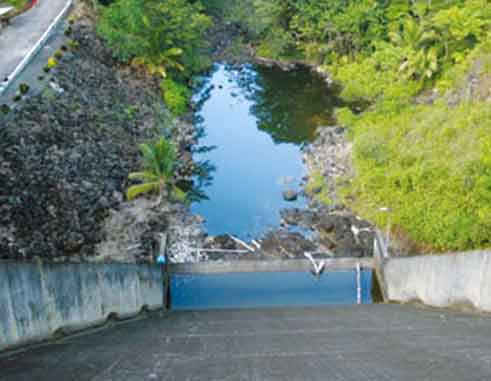WITH the Atlantic hurricane season already upon us, the Water and Sewerage Company Inc. (WASCO) is yet to allay the fears of consumers as to the progress of negotiations aimed at tackling the desilting process at the John Compton Dam.
After informing the public last year that negotiations with bidders had ended unsuccessfully and that the process had to recommence, company officials had indicated that by August last year it would have “received, evaluated and either in a position to make an award or enter into negotiations again”. Since then, the taps seem to have gone dry on words from the company.
The dam’s water holding capacity became increasingly lessened due to an accumulation of silt following a string of tropical storms battering the island. Hurricane Tomas created a greater problem when tonnes of silt compounded the situation, reducing the dam’s capacity significantly.
Since then, WASCO has been faced with the task of restoring the dam to its original capacity while battling its own financial woes. In fact, in November 2015, during a media tour to the dam, the company’s Chairman, Egbert Louis, said quotations received to desilt the dam ranged between US$6 million and US$39 million. He said the 10.43% dredging fee – which formed part of the 66% rate increase approved by the National Water and Sewerage Commission in 2013 — had only amounted to US$1.5 million per year and was “insufficient to undertake the proposed works”.
According to WASCO’s estimation, citizens in the north use an average 30 gallons of water per day. With the dam’s desilting schedule being both uncertain and understandably expensive, the company nevertheless needs to keep citizens apprised regularly as to what measures are being adapted to safeguard their regular supply of that commodity. After all, the company must not only make the news for water interruptions and its employees taking industrial action.
Water, like the company says, is life and with the heavy downpours that are already beginning to hit us, it means that any efforts at ameliorating the poor state of the dam would be compounded by another year of excuses as to why more water shortages would continue in the foreseen future.
The question that WASCO needs to answer is this: Why should we wait until the dam runs dry to figure out that we are in a crisis situation as far as reliable water supply is concerned?













